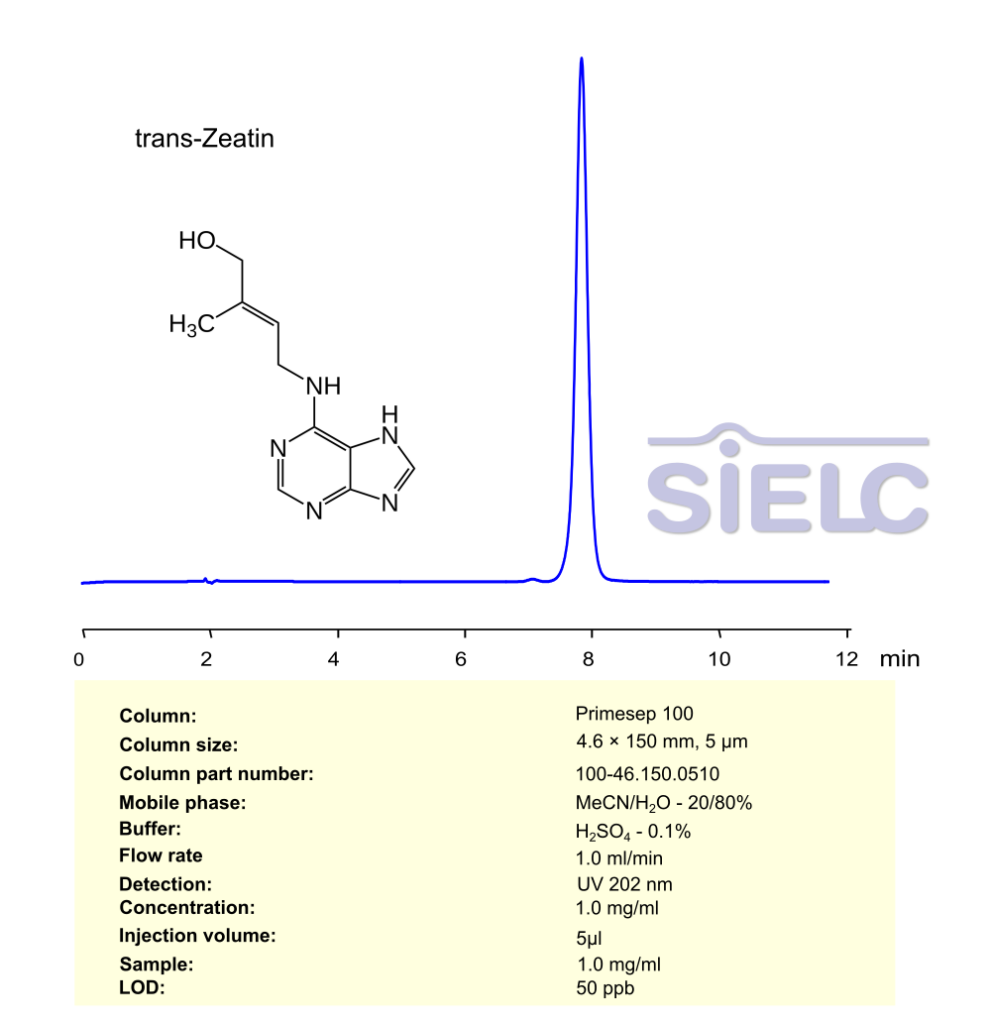High Performance Liquid Chromatography (HPLC) MS Method for Analysis of trans-Zeatin on Primesep 100 by SIELC Technologies
Separation type:Liquid Chromatography Mixed-mode SIELC Technologies

High Performance Liquid Chromatography (HPLC) Method for Analysis of trans-Zeatin
trans-Zeatin is a type of cytokinin, a class of plant hormones that promote cell division and growth, delay aging, and play a crucial role in plant development. It is one of the most active and common forms of zeatin found in plants.
It is often involved in various physiological processes, including seed germination, leaf formation, and root and shoot differentiation.
trans-Zeatin can be retained, separated and analyzed using a Primesep 100 column. The analysis employs an isocratic method with a simple mobile phase comprising water, acetonitrile (MeCN) and Sulfuric acid as a buffer. This method allows for detection using Vis 200 nm.
You can find detailed UV spectra of trans-Zeatin and information about its various lambda maxima by visiting the following link.
| Column | Primesep 100, 4.6 x 150 mm, 5 µm, 100 A, dual ended |
| Mobile Phase | MeCN/H2O- 20/80% |
| Buffer | H2SO4 – 0.1% |
| Flow Rate | 1.0 ml/min |
| Detection | UV 202 nm |
| Sample | 1 mg/ml |
| Solvent | MeCN/H2O- 20/80% |
| LOD | 50 ppb |
| Class of Compounds | Cytokinin, Plant hormones |
| Analyzing Compounds | trans-Zeatin |
Application Column
Primesep 100
Column Diameter: 4.6 mm
Column Length: 150 mm
Particle Size: 5 µm
Pore Size: 100 A
Column options: dual ended





